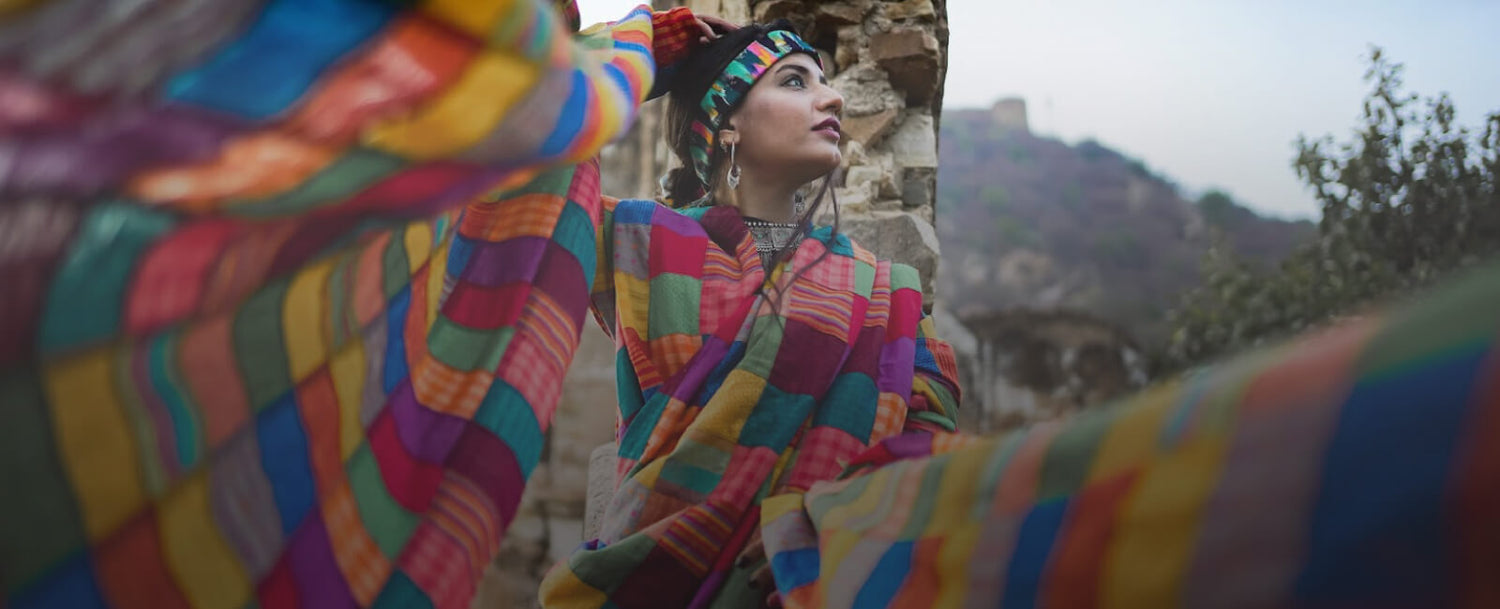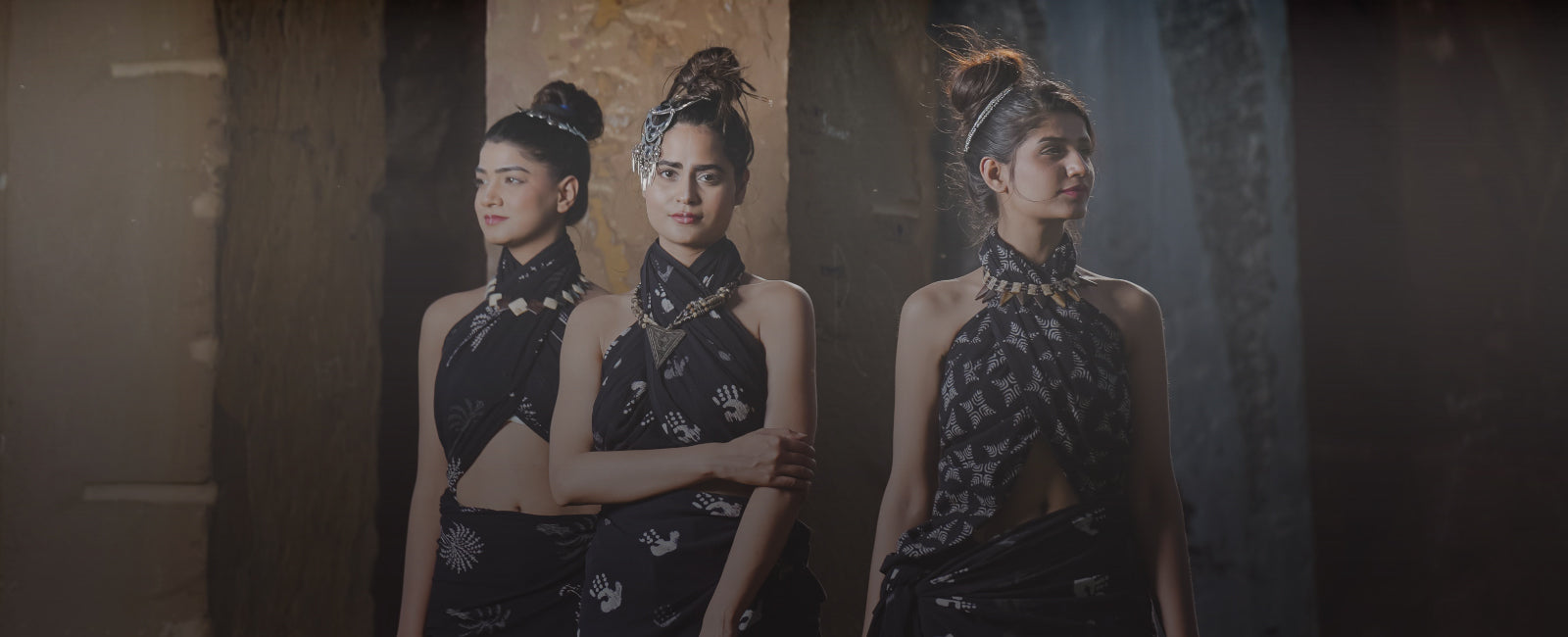We all want "colourful" and embellished attire, but we don't care about where these colours come from. Scientifically, it is a work of light and how our eyes perceive them - physicists mention it has little to do with the pigment but their ability to absorb and scatter wavelength.
But, let us not get all scientific - our intent is to discover the very existence of colours, not to get down to light, wavelength and scattering. The simple answer would be on the lines - Nature works her wonders and blesses us with a wide range of colour palette. However, it is still a mystery as to how mankind discovered this many colours. Although we don't have much to narrate, we do have conclusive evidence to show these came into existence albeit the said interesting and mysterious backstory.
-
Red
Red is akin to a double-edged sword, for once it is related to a lucky and charming colour - whereas many consider it to be a sign of danger! Regardless of how we humans perceive it, the Fashion industry would be dull without the presence of this colour. Imparting a strong visual impact in the eyes of designers and fashionistas, Red wouldn't be the same if it wasn't for Indian Madder. Also known as Manjistha, Madder contains Alizarin - the pigment responsible for the Red colour. Even though the plant takes years to grow, once it is dried it will give one of the purest stains of red. That is why the herb was famous amongst the ancient Egyptians.

-
Yellow
Unlike Red, Yellow only illustrates Luck, Prosperity and Positivity. Needless to say, the source for Yellow pigment is also prosperous and abundant. Historians relate herbs such as Harsingar, and Turmeric. While Turmeric imparts a very rich and vibrant yellowish-hue, Harsingar has a mix of orange and yellow. The latter is believed to be one of the five trees that can be found in the heavens. Apart from the foretold plants, Yellow can be naturally extracted from:
Minerals - Chromium, Lead and Titanium
Flowers - Marigold and Goldenrod

-
Orange
Much is ambiguous as to how pure orange is extracted, but the closest and the simplest way to obtain this pompous colour is Brown Onion! Might sound strange, but the skin of Brown Onion when treated properly will help heaving orange shade. Brown Onion skin is not the only source, scientists have paved a way to produce orange by combining the natural stains of Yellow and red. The reason why natural stains are quintessential for this purpose is because of their purity - many a time Yellow and Red contains traces of blue, which is non-existent in natural colours.

-
Brown
Unbeknownst to many, Brown is associated with strength and durability - psychologists believe Brown attire invokes resilience. There are many sources for natural brown stain - starting from coffee beans to walnuts. However, a lesser-known source, which is abundant in India, is Babool. Often found in the sandy parts of India, this medicinal plant is known to have various shades of brown on its bark. To add to the extent of obscurity in brown stains is Octopus ink. Yes, you heard me! The ink from Octopus or Cuttlefish is believed to have one of the purest stains of brown.

-
Blue
Blue and Red are two of the most likeable colours amongst the children. As the third primary colour - Blue symbolizes Serenity, inspiration and wisdom. I won't touch on Indigo as a source, as it is very obvious. But there are certainly other alternatives wherein Blue hue can be extracted. For instance, Woad - a medicinal herb that is believed to have the same pigmentation as True Indigo, produces a very natural blue dye. Although the concentration of this pigment is not as strong as Indigo, it works wonders and produces an elegant stain of blue.

-
Green
At this point, we have related Nature to Wonders - but the epitome for the same can be found from Green pigment and its source. While it is logical to think a Reddish flower may produce Red dye, but in the case of Sumac - when the plant is treated for dye, we get a pure green shade instead of red! Apart from Sumac, some other sources of Green colour are Spinach and Nettle leaves, Tea Tree and Larkspur plants.

Want a glimpse of what these naturally extracted colour palettes look like? Take a look at our naturally dyed fabric collections, Jhag Fabric & Fadat Fabrics Originally, Ajrakh Hand Block fabrics were dyed with natural colours. Over time, the improvisation of printing Ajrakh motifs led to the use of chemical dyes, like Screen Print Ajrakh & digital print Ajrakh.

Ever since we found the benefits of using natural dyes, we have been proactive in having the best of such naturally extracted colour palettes in our inventory. That's the reason why we stressed the application of Jhag fabric over others. This Holi let us devote our time wholly to find alternatives for synthetic dyes and save our Holy nature from further deterioration. Let us paint a sustainable future for our nature by nurturing the natural shades!
We also happen to be a magnet for suggestions, and would love to catch yours….throw us yours on hello@fabriclore.com




